
**
2019年 12月10日,杨安泽终于获得参加第六次民主党初选电视辩论会的资格。他是第七个,也是最后一个过关的。
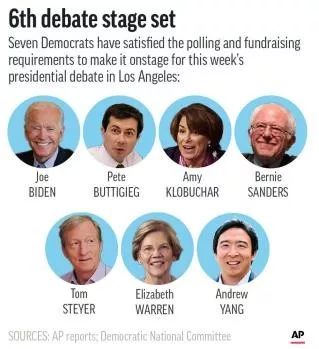
他的助手们比他本人更早知道,具有决定意义的昆尼皮亚克大学民调结果出来时,杨安泽本人正在与《得梅因纪事报》编辑委员会成员们坐在一起谈话,竞选团队的工作人员举起一个“提示牌”,向他们通报了这个消息。
无论对于杨安泽还是他的日益增多的支持者来说,这都是令人振奋的。
12月19日,周四,东部时间晚上8点至11点,杨安泽将和前副总统拜登,印第安纳州南本德市长布蒂吉格,明尼苏达州联邦参议员克洛布查,佛蒙特州联邦参议员桑德斯,亿万富翁商人斯蒂尔和马萨诸塞州联邦参议员沃伦一起参加在洛杉矶玛丽蒙特大学举行的,由PBS/Politico主持的辩论会。
作为亚裔候选人,杨安泽也为这次辩论会带来了必要的多样性。在此前已经符合资格的加州参议员哈里斯(亚裔黑人女性候选人)12月初宣布退选之后,已经开始有人批评参加辩论会的候选人只剩下白人了。
这是迄今为止规模最小的辩论会,仅有7名候选人参加,虽然民主党仍有15位候选人在积极竞选。
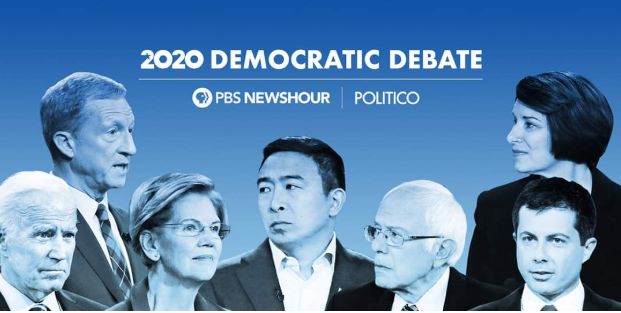
候选人必须在12月12日午夜之前达到民主党全国委员会的要求,其中规定,从10月16日至12月12日,候选人必须在四个早期投票州或全国民意调查中达到4%,或者在两个早期州民意调查中达到6%。另外,还要求每个候选人在全国有200,000个政治捐款人,20个州分别达到至少800个捐款人。
参加了11月辩论会的新泽西州参议员布克,以及自10月以来一直未能参加辩论的前住房和城市发展部长卡斯特罗都没有达到这些标准。他们的缺席使舞台上没有了非裔或西班牙裔候选人,这两个族群对民主党来说都很重要。
夏威夷众议员加巴德在民主党初选中表现出更为保守和有争议的立场,她只需要再得到一次4%的民意调查即可合格,但她12月9日晚上在Twitter上宣布,即使她符合要求也不会参加辩论。
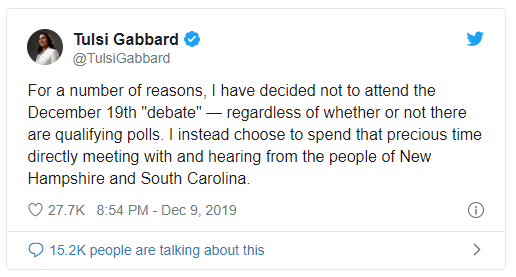
在昆尼皮亚克大学这个至关重要的民调中获得4%的民主党或民主党倾向选民的支持后,杨安泽得以跨过美国民主党全国委员会设定的2020年总统选举党内初选第六场辩论的准入门槛。12月19日晚,他可以像参加前5场党内辩论那样,在一个无需自己付费的公共平台上展示自己的才能、真诚、勇气,当然还有潜力。
与前五场辩论相比,门槛再一次提高,而杨安泽仍旧与之前五次一样,磕磕绊绊但有惊无险地迈过障碍。
尽管在7名进入辩论环节的候选人中,他的支持率仍旧被对手碾压,但他的支持者在逐渐增加。根据民主党官网公布的信息,第三季度杨安泽所募得的捐款增长率是所有候选人中最高的。其中当然有早期基数太低的原因,但是他越来越受到关注与欢迎,是不可否认的事实。
同样不能否认的是,人们最初得知杨安泽参选的消息时,更多是把他当做又一个毫无希望的搅局者,甚至怀疑他自己都没有确定要“玩真的”。不过随着这个风趣幽默的候选人接连跨过党内辩论门槛,一次次在辩论中表现出色之后,人们开始期待他能再走得更远一些。
现在,他走到了第六场辩论的舞台上,这是今年民主党初选党内辩论的最后一场,他将面对实力强大的对手。在这一场辩论中,杨安泽与六名对手的最直观差别是肤色,他是七个人中唯一的“非白人”。
从宣布将要争取民主党总统大选提名开始,很多人认为身为华裔的他注定只是陪跑者。事实上杨安泽也一直被美国媒体忽视甚至轻视。尽管这样,他仍旧没有在任何场合刻意使用“族裔牌”为自己博取同情、争取支持,族裔也从未成为杨安泽竞选团队的主要话题。
这种竞选方式多少有一点与2018年底台湾政治人物韩国瑜竞选高雄市长时的选战打法类似,不涉及族群议题,只强调爱与包容。
杨安泽的父母来自台湾,作为只会说简单中文问候语的第二代移民,他完全是一个地道的美国精英——有良好的家庭出身,出色的教育背景,以及美满的家庭生活。
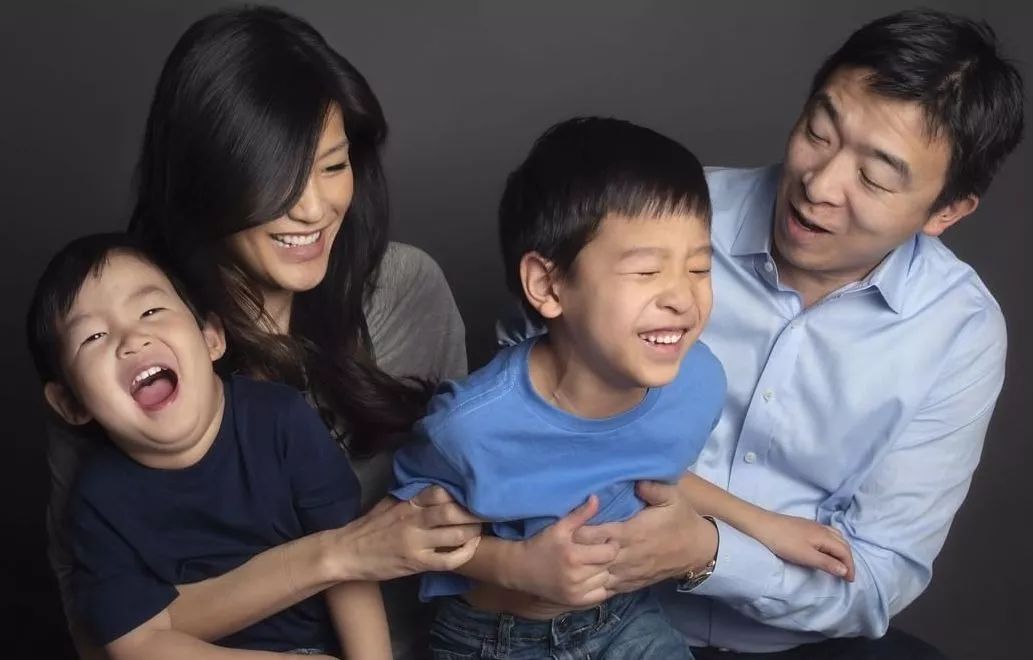
杨安泽与妻子养育着两个儿子,他不回避长子罹患自闭症的现实,在一家四口的合影中,每个人都带着笑容,开心得嘴巴都合不拢。
他的职业经历丰富且小有成就。杨安泽做过律师、从事过慈善、还是一名硅谷创业者,同时也为许多创业项目提供过支持。
2011年他创办的非营利机构Venture for
America,为美国中西部和南部的年轻人做在岗培训,提供创业支持。因为这个项目,杨安泽接触到不少因自动化革命而失去工作的案例。项目运营第二年就获得时任总统奥巴马的支持,杨安泽被授予“白宫变革先锋”称号。这是2017年底宣布自己的政治雄心之前,他与白宫最亲近的一次联系。
杨安泽目前最被人了解的政见也与此有关,在他看来,未来自动化必将全面替代人力,从而导致大面积失业。为了解决这个问题,杨安泽提出“全民基本收入”,这个被简化为“每人发放1000美元”的计划,让他看起来非常激进,不过他对实现这一建议有完全能够自圆其说的行动计划,尽管那只是理论上的逻辑自洽,也已经完全超出了选战口号的层次。
“全民基本收入”引来的关注度太高,甚至让人们忽略了他的其他政见。
其实,作为目前竞选纲领最完整的候选人,杨安泽在所有的竞选议题上,无论是政治还是经济乃至社会层面,都有明确的政策规划。他关于选举制度、教育与移民政策的见解,让他与传统政客站在一起时,显得与众不同,或者说是格格不入。
杨安泽善于并喜欢使用数据来解释自己的政策建议,这一方面是因为作为经济与法律背景的企业家,驾驭数字更得心应手,另一方面是因为这使他与“口号政治家”比起来更具有可信性与吸引力。
杨安泽从一开始就表现出一个与传统政治家不同的候选人形象,他避免以意识形态与党派利益作为自己的盔甲,而是奋力扮演“问题解决者”的角色。
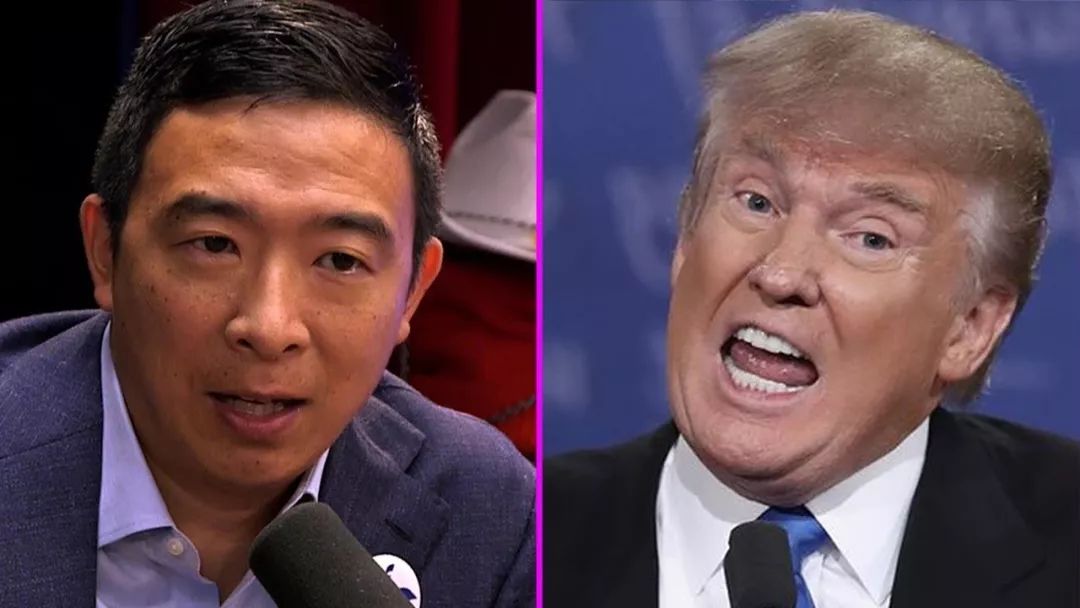
2019年7月31日,杨安泽参加第二轮辩论时,在开场中称自己是“川普的反面”——一个喜欢数学的亚裔。他提出的每一项解决方案,都有数据作为支撑,这倒多少印证了美国人认为亚裔人士天生具有数学天分的刻板印象。杨安泽就势以“数学”为武器,在政治丛林中,披荆斩棘。他的竞选口号,“Make
America Think Harder”首字母连在一起就是“MATH”——数学。
这个“让美国努力思考”的口号,除了是对川普当初竞选口号“让美国再次伟大”(Make America Great Again)的戏仿,更是针锋相对的讥讽。
“思考”要比“伟大”实现起来难得多,因为后者只是目标与口号,前者则必须是具体的行动。杨安泽提出“让美国努力思考”,其实也提示了美国当前必须正视的问题,是时候探索一条更为理性的发展道路。
12月19日,杨安泽将要参加第六轮党内辩论,“川普的反面”已经跨出了艰巨的一步。
他说,“我们已经完成了最艰巨的任务。”

英文新闻: Andrew Yang Qualifies for PBS NewsHour/POLITICO DebateBy ZACH
MONTELLARO12/10/2019
Andrew Yang has qualified for the December Democratic primary debate just days
before this week’s deadline, joining six other candidates on the stage. He’s
the seventh — and likely final — candidate to qualify.
Yang received 4 percent support in a national Quinnipiac University poll
released on Tuesday, one of the two qualifying polls to be released after a
nearly two-week drought.Yang had come tantalizingly close to qualifying before
— hitting 3 percent in 12 of the 26 December qualifying polls released so far,
including a Monmouth University national poll released earlier in the
day.He’ll join six other candidates who have already qualified for the Dec. 19
debate in Los Angeles, which is co-hosted by PBS NewsHour and POLITICO: Joe
Biden, Pete Buttigieg, Amy Klobuchar, Bernie Sanders, Tom Steyer and Elizabeth
Warren.To qualify, candidates need to hit 4 percent in four polls approved by
the DNC (or 6 percent in two early-state polls) and have contributions from
200,000 unique donors.No candidate’s qualification is official until confirmed
by the DNC; candidates’ qualification is based off of POLITICO’s tracking of
public polling and donor counts.”We are going to do something unprecedented on
the debate stage next week, and that is show up as the lone person of color,”
Yang joked to reporters in Iowa. “I’m excited to make the debate stage, not
surprised. We’ve been showing consistent growth throughout.””I will be honest,
I thought we would going to make it based upon a poll in one of the early
states,” he continued. “But thrilled to make it on the basis of a national
poll — that in some ways is even better.”Both polls show Biden, the former
vice president, leading the field.In the Monmouth poll, Biden has a narrow
lead over the two leading liberal challengers, Sanders and Warren. He is at 26
percent to Sanders’ 21 percent and Warren’s 17 percent. Pete Buttigieg is a
distant fourth at 8 percent, followed by Mike Bloomberg’s 5 percent. Sen. Amy
Klobuchar was at 4 percent, her best performance in a Monmouth national poll
this year, which made her the final candidate to clear that benchmark.The
Quinnipiac poll shows Biden with a greater advantage. He is at 29 percent, to
Sanders’ 17 percent and Warren’s 15 percent. Buttigieg is at 9 percent, and
Bloomberg is at 5 percent. Yang is the last candidate at the 4 percent
mark.Biden, Sanders and Buttigieg were roughly stable in the Monmouth poll,
compared to the results of a November poll from the university. Warren saw a
modest drop, and this is the first time Bloomberg was included in a Monmouth
poll since the beginning of 2019, before he initially ruled out a presidential
run.In the Quinnipiac poll, Biden and Sanders both saw a small modest bump.
Warren was stable, while Buttigieg’s vote share dropped 7 points.Tulsi
Gabbard, the only other candidate who is close to qualifying for the debate,
had less than 1 percent support in the Monmouth poll and 2 percent in the
Quinnipiac poll. Gabbard is one poll away from qualifying. However, she
seemingly removed herself from contention Monday evening.”For a number of
reasons, I have decided not to attend the December 19th ‘debate’ — regardless
of whether or not there are qualifying polls,” she tweeted on Monday. “I
instead choose to spend that precious time directly meeting with and hearing
from the people of New Hampshire and South Carolina.”However, the Hawaii
congresswoman could always change her mind. She publicly toyed with boycotting
the October debate, before ultimately opting to participate.Bloomberg will not
be in the Dec. 19 debate, either. He is not collecting campaign contributions,
which precludes him from the debate stage — and it isn’t clear if he would hit
the polling threshold either.No other debate qualifying polls have been
publicly announced ahead of the Thursday deadline, but polls’ releases are not
typically announced well in advance.All of the polls approved by the DNC are
conducted either by independent media outlets or universities, who decide on
their own when to conduct and release polls. Some pollsters have publicly
bemoaned the position the DNC has put them in, arguing that debate
qualifications was not the reason they were conducting surveys.Yang found out
he qualified for the debate during a meeting with the Des Moines Register’s
editorial board, when his campaign manager held up a sign that said “4%! We’re
in!”The Monmouth University Poll was conducted from Dec 4-8. It surveyed 384
registered voters who identify as Democrats or lean toward the Democratic
Party and has a margin of error of plus or minus 5 percentage points. The
Quinnipiac University Poll was conducted from Dec. 4-9, surveying 665
registered Democratic voters and independent voters who lean Democratic, and
has a margin of error of plus or minus 3.8 percentage points.
Eugene Daniels in Des Moines, Iowa, contributed to this report.

【编者按】 本文仅代表作者观点,不代表APAPA
Ohio及OCAA官方立场。所有图片均由作者提供或来自网络。如存在版权问题,请与我们联系。更多精彩文章,请查看我们公众号的主页。欢迎大家积极投稿!